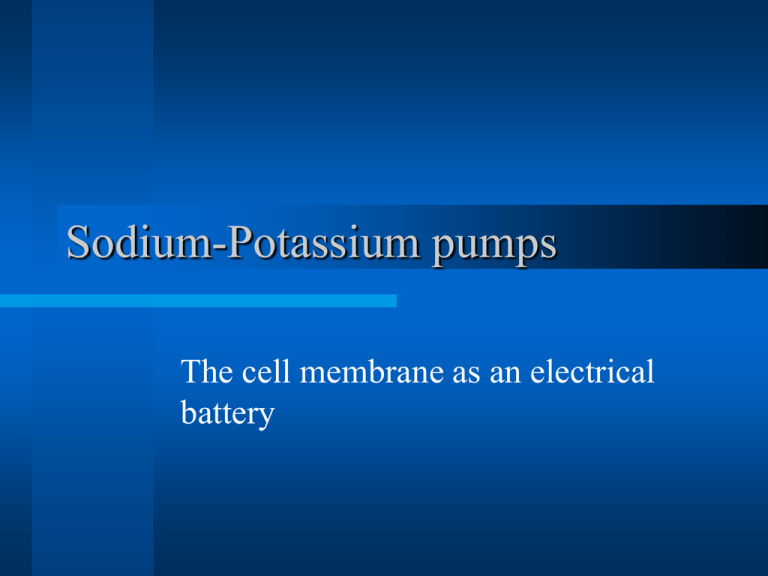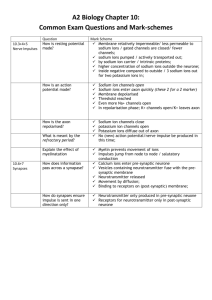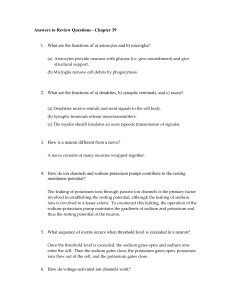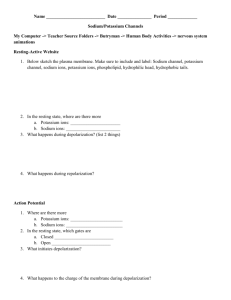Sodium-Potassium pumps
advertisement

Sodium-Potassium pumps The cell membrane as an electrical battery Active transport is responsible for cells containing relatively high concentrations of potassium ions but low concentrations of sodium ions. Requires E (ATP) The mechanism responsible for this is the sodium-potassium pump which moves these two ions in opposite directions across the plasma membrane. Concentrations of sodium and potassium ions on the two other sides of the membrane are interdependent, suggesting that the same carrier protein transports both ions. (green channel protein, red ATP-ase) The carrier is an ATP-ase and it pumps 3 sodium ions out of the cell for every 2 potassium ions pumped in. Function of the pump The Na+/K+-ATPase helps maintain resting potential, assists transport and regulates cellular volume. In order to maintain the cell’s resting potential, cells must keep a low concentration of ↓ sodium ions & high levels of ↑ potassium ions within the cell. Potential? Means E possibility Potential: a gradient where there are different concentrations of ions on either side of a membrane just like a battery with + and – sides When the cell is at rest there is a homeostatic state called the resting potential & cell has good volume Cells need to bring in substances (glucose, amino acids) by facilitated transport The battery is maintained using ATP continuously to force sodium out of the cell & potassium into the cell. 3 Na+ out for every 2 K+ in Movement of sodium from one side of a cell membrane to the other side creates an osmotic gradient that drives the absorption of water. Water diffuses back into the cell carrying needed substances = facilitated transport Concentrations of sodium and potassium ions on the two other sides of the membrane are interdependent, suggesting that the same carrier protein transports both ions. (green channel protein, red ATP-ase) The carrier is an ATP-ase and it pumps 3 sodium ions out of the cell for every 2 potassium ions pumped in.






